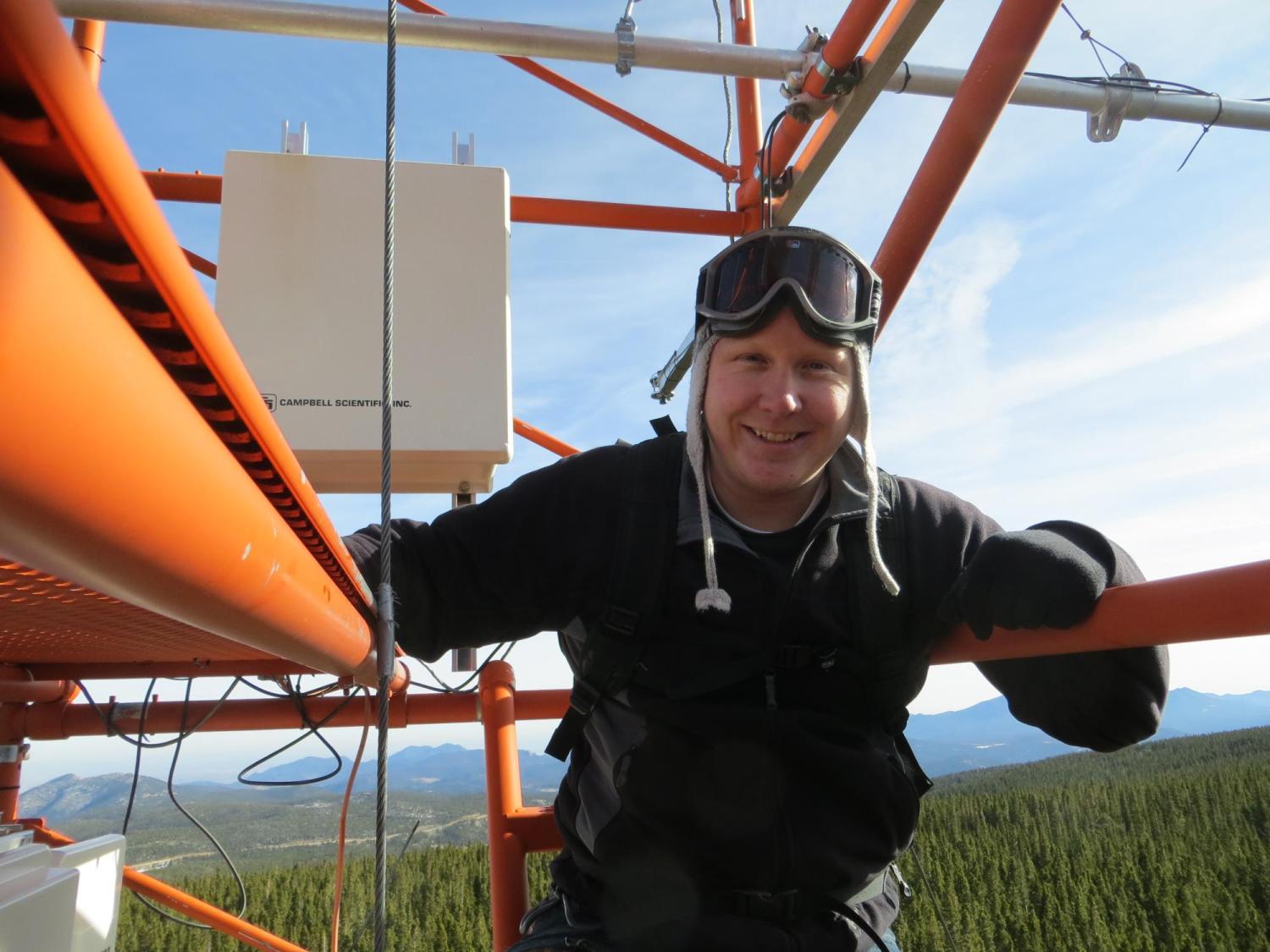Mark Raleigh
- Assistant Professor, Geography, College of Earth, Ocean, and Atmospheric Sciences
- Oregon State University

Dr. Mark Raleigh is a snow hydrologist and an assistant professor in the Geography program in the College of Earth, Ocean, and Atmospheric Sciences at Oregon State University. Previously he was a researcher at the National Snow and Ice Data Center and the Geological Sciences Department at the University of Colorado, Boulder. His research interests include snow hydrology of the western United States, forest-snow process interactions, remote sensing, numerical modeling, and data assimilation.
Abstract
Snow in forest canopies: new insights from old ideas
In forested basins, the amount of snow that accumulates on the ground depends on how much snowfall is intercepted in the forest canopy and the subsequent partitioning of canopy snow into sublimation, unloading, and melt drip. However, the amount of precipitation intercepted in forest canopies is rarely measured, and existing field studies of snow interception have suggested opposing sensitivities to temperature. Reliable observational techniques of canopy interception are needed to advance understanding and management of forested watersheds, especially in the context of a changing climate. Nearly five decades ago, a field study noted that wind-induced tree sway decreased when the canopy was loaded with snow, but to date this promising method has not been applied to measure snow interception. Here, I detail my efforts to use this technique to quantify the mass of intercepted snowfall in coniferous canopies. Accelerometers collected tree sway data nearly-continuously for six years at Niwot Ridge (2014-2020, two trees), and one year each at Grand Mesa (2016-2017, three trees) and Senator Beck Basin (2016-2017, two trees) in Colorado. Consistent with mechanical theory, the data show coherent drops in tree sway frequency during snow interception events, but also show increases in frequency when the trees freeze and become rigid. Compared to ground-based measurements of new snow, the sway technique shows good correspondence in the relative magnitude of snowstorms and a reasonable representation of the maximum snow interception capacity of a canopy. I will highlight the opportunities and limitations of this methodology for refining understanding of canopy processes in models.

